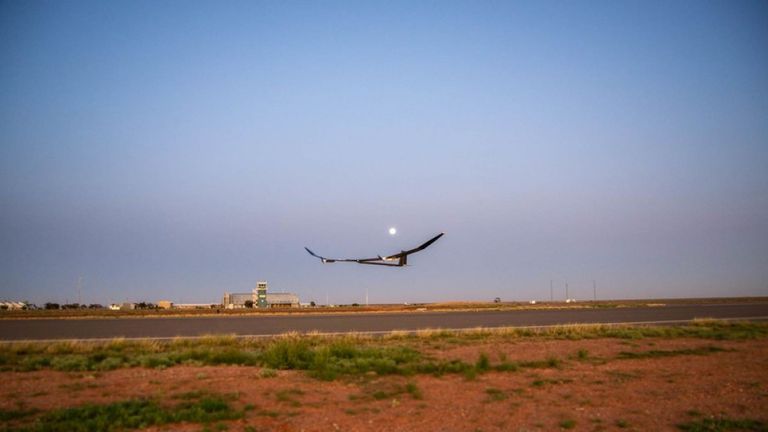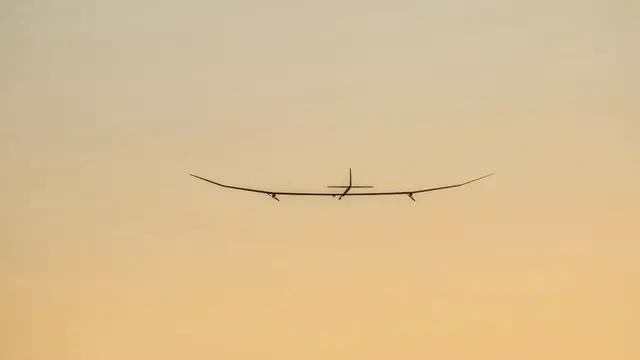A solar-powered electric aircraft which could stay airborne for a year has completed its first test flight.
The PHASA-35 is an unmanned aerial vehicle which could fill a gap between aircraft and satellite technology by flying in the stratosphere, up to 20km (66,000ft) in the sky.
It was designed by BAE Systems and Prismatic only two years ago but has already taken to the skies at the Royal Australian Air Force's Woomera test range in South Australia.

Image:The UK-designed solar powered plane completed its first flight
The plane's 35m wingspan is covered in solar panels which power it during the day while batteries store the additional energy to keep the PHASA-35 airborne at night.
It flew at an altitude of 2km (7,000ft) which, while some way short of the height ultimately expected of the aircraft, was a rapid achievement considering how recently the design had been completed.
Ian Muldowney, the engineering director for BAE Systems, described the flight as "an outstanding early result" which "shows that we can rise to the challenge the UK government has set industry to deliver a Future Combat Air System within the next decade".
According to BAE Systems, the plane could even be used to deliver 5G communications networks - although it is some way off being able to handle the weight of 5G multiple-input and multiple-output antennas, which can exceed 40kg.

Image:The plane flew at an altitude of just 2km on the test flight
The current maximum payload for the PHASA-35 is 15kg. Alternative mechanisms for the aircraft to send and receive radio signals could allow it to perform a more limited role in delivering 5G signals.
According to BAE there are more flight trials scheduled for later this year, and once the trials are completed the company suggested the PHASA-35 could begin to be used by customers within 12 months.
 简体中文
简体中文

